Dressed in black suit, white shirt and black tie, M&S boss Marc Bolland looked more like an undertaker than the CEO of a fashion retailer, but he certainly cut a much more colourful dash in terms of his demeanour than he has in the past, as he unveiled-better-than expected half-year results today.
In a confident display at the London Stock Exchange, Bolland said M&S was entering a phase of ‘delivery’, following four painful years of ‘transformation’, in which the focus has been on building infrastructure and developing the team around him to support his strategic vision.
And he certainly ‘delivered’ one or two pleasant surprises for the City, with gross margins on the GM side up 150bps – and providing guidance to suggest this would increase to 200bps for the full year expected – and a £73m improvement in cashflow resulting in a 4% increase in the dividend.
It’s early days, of course. And in no area of the business is this more obvious than in the case of online. Dotcom sales were down a disastrous 6.3% over the first half following the move to a new platform in February. But they’re headed in the right direction, he insisted, with sales –4.6% in Q2 as opposed to the –8.1% figure in Q1. Conversion rates were 20% up at the end of the half versus the start of the trading period, he added, with customer satisfaction levels up 15%. And they would return to growth ahead of the crucial peak Christmas trading period, he added.
Still, how he – and more particularly GM boss John Dixon – must have been ruing the impact from the platform switch in the interims. GM sales were down 2.3% to £1.9bn in the first half (with like-for-like sales down 2.9%). And while we’ve grown used to GM sales falling for a number of years, you have to ask where would GM sales have been without the dotcom disaster.
Bolland insisted M “M&S has got its style back,” he said. And it had also backed its rediscovered fashion sense with better availability of its Limited and Indigo ranges across the estate, referencing a miniskirt, which had racked up 10,000 sales, and was available in all stores.
So what’s held it back? Bolland promised not to blame the weather… while clearly blaming the weather, unusually reporting on sales growth across the first five months of the half (up 1.3%) in order to demonstrate the severity of the impact from the unseasonably warm weather in the sixth month, which resulted in womenswear sales falling 0.9%.
But if he had included GM losses from its dotcom platform switching woes, that alone equates to a loss of around 1% in clothing sales. Add the two together and sales would have been flat. And if M&S hadn’t switched platforms, sales would have been up assuming it had instead maintained its run-rate going into the switchover.
Bolland wasn’t about to let dotcom put a dampener on the outlook, however, let alone the weather. The move to in-house development was the right one for the business in the long term, he insisted. “The team is in the house,” he said, expressing his confidence in the “very smart, tech-savvy” developers (without mentioning Laura Wade-Gery specifically). “We’re here for the long run, with an improved delivery proposition that customers appreciate.”
And he used a car rental analogy to explain the switch. “We’ve been renting a car,” he said – a reference to the Amazon platform it had previously licensed. “But it’s one of those capabilities that we feel we need to have in house, to give us a competitive advantage. Is it easy to do? No. And it’s also complex to then switch over to a new platform overnight, especially on this scale. But we’ve now built a car, it’s driving now, and it will go faster.”
In the same vein, he also believed that a similar move, again in its infancy, to move to direct sourcing would enable M&S to deliver better innovation at a faster pace. Direct design was up to 25% from a standing start. Over the course of the year he wants that figure to reach 60%. And the levels of skill he’s expecting (“not just drawing nicely but getting detailed specifications right to provide to factories”) will mean that in-house design capabilities will match the value M&S derives from its 36-strong in-house food team in helping to ensure that the M&S customer would be able to experience that same sense of “newness” over a much shorter cycle – with new items in-store and online as often as every three to four weeks.
That sort of turnaround time will start to make the food side of the business look sluggish. But the food division again outperformed the market. With Q2 like-for-like sales up 0.2%, Steve Rowe’s division managed to post its 20th consecutive quarter of like-for-like growth but only just.
With overall like-for-like sales up 1% in the first half, M&S has not been entirely unaffected by the tumultuous conditions in the grocery market, but despite a slowdown, Bolland’s confidence in the food strategy is such that M&S announced today an acceleration in the rollout of its M&S Simply Food stores programme, with a further 50 standalone food stores to be added to the network in addition to the 150 already planned as part of the three-year plan to 2016.
In total 22 Simply Food stores opened in the first half – a 50/50 mix of owned and franchise – and there will be more than 40 further openings in the second half. But the number Bolland is clearly focused on is the fact that sales in these stores have been 10% ahead of expectation.
However, while gross margins on the food side increased by 25bps, Bolland stressed that improving margins further on the food side was not the imperative. “We are very clear. We want to keep value and quality there, so the operational efficiencies we are looking for will be focused on maintaining these.”
Waxing lyrical about the value offered by its Madagascan prawns (“at 3 for £10 you can buy 15 top quality, large prawns for the same price you would pay for three prawns at a restaurant”), Bolland was equally excited about the quality of innovation in store over Christmas.
So what did he think about the new Lidl ad in which punters guess that the Christmas dinner served to them comes from either M&S or Waitrose? Bolland hadn’t seen the ad, he said, and never comments on what his rivals are doing. But he’s evidently not too bothered. Picking out a Five Gold Rings Christmas chocolate cake among the 300 lines launching over Christmas, Bolland was encouraged by an improved consumer outlook and the fact that food orders from the catalogue were already up 23% year-on-year, with more than 40% ordering online.
If only the new website had been working better a little earlier, Christmas would have come early. But “I have a lot of fun in my job,” he added. “It’s a lot of hard work, but the signs are encouraging.”



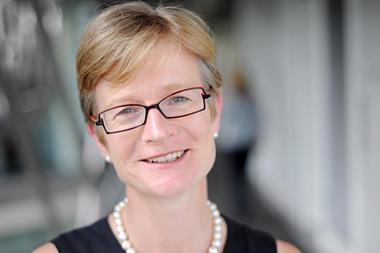

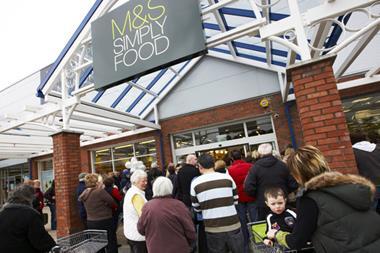



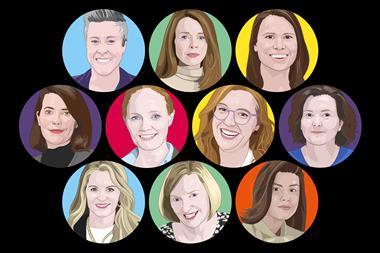


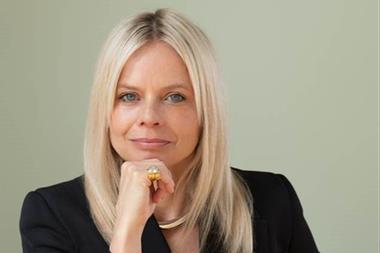

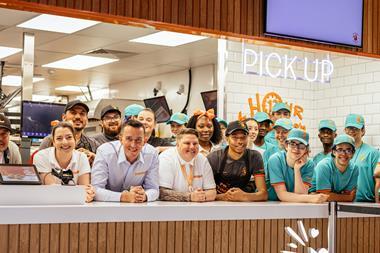
No comments yet